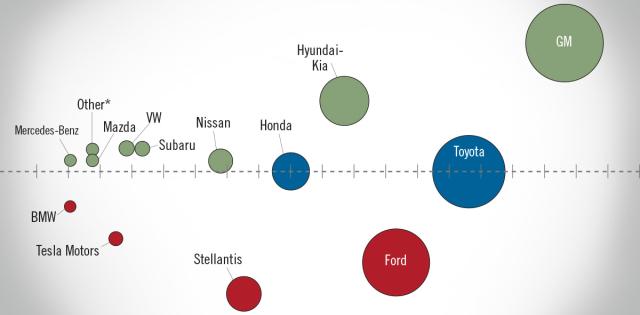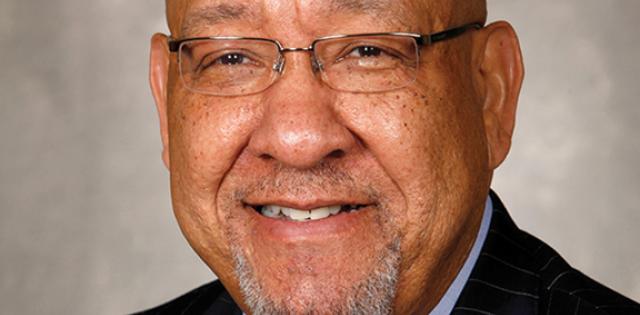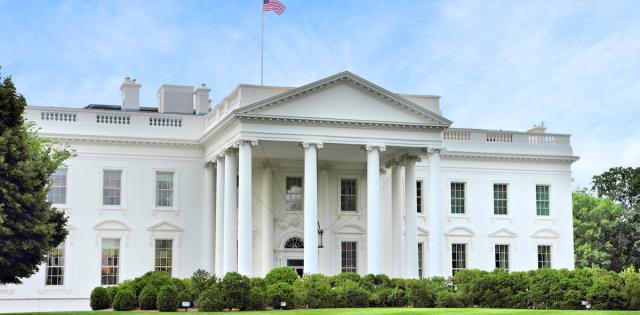On January 28, NADA hosted a webinar entitled “2021 Policy Outlook: What Changes Can Be Expected in the New Administration.” For the discussion, NADA Senior Vice President for Public Affairs Jonathan Collegio hosted Loren Smith, president of Skyline Policy Risk Group and a former Deputy Assistant Secretary for Policy at the U.S. Department of Transportation (DOT).
Smith agreed with Collegio’s premise that following a period of deregulation under the Trump administration, all federal agencies working in the transportation space are likely to ramp up new regulations. Smith cited the new administration’s focus on several specific themes for regulatory action affecting autos and transportation generally: “climate policy is a huge priority… equity—racial equity—a major driver… we’re also going to see a lot of work promoting technologies, and on transit and passenger rail.”
Asked about likely policies emanating from DOT and EPA to promote zero emissions for autos, Smith predicted a “carrot and stick approach” of incentives and mandates. “A lot of the ‘carrot’ will come from Congress in particular,” Smith said, including direct funding and tax credits, with regulatory agencies focusing on the “stick” of mandates.
Along these lines, Smith noted the speed with which the Biden administration has staffed up positions across federal agencies with progressive appointees highly committed to action on climate change. “If you look not just at the words, but also the deeds – the personnel they’ve put in place… they’ve been very quick to staff up even relatively obscure offices with people with backgrounds in progressive climate policy.”
Smith sees both DOT and the Department of Energy promoting electric vehicle infrastructure as part of the climate policy push, especially considering the drive toward favoring electric vehicles (EVs) over internal combustion engine (ICE) vehicles. Smith was bearish on subsidies for hydrogen-powered cars due to the reliance on natural gas—a fossil fuel—to commercially produce hydrogen, which in turn has given hydrogen a mixed reputation among some progressive climate policy advocates.
Smith believes EVs face three major challenges to mass adoption: 1) consumer resistance; 2) societal costs associated with the transition from ICE cars to EVs; and 3) the need to upgrade the power grid to handle a potentially substantial increase in the draw from charging millions of new EVs. “It’s tricky because, yes, we have transmission lines everywhere,” Smith said, “but you’ve got to build completely new lines of transmission” to integrate new energy production facilities, particularly for renewable energy, like wind and solar, preferred by the Biden administration. EV-related mandates could punt the harder work of expanding the power grid to a future administration.
On the potential for car recalls ordered by NHTSA, Smith cited the Tata airbag recall during the last administration as a learning experience for the agency. He further contrasted that with the Biden administration’s emphasis on other priorities. “A big question is going to be how much bandwidth is going to be taken up with the [Corporate Average Fuel Economy] CAFE issue,” as, according to Smith, a tremendous amount of the agency’s focus will be on President Biden’ executive order to review and revise rules on fuel efficiency standards.
When it comes to regulatory changes necessary to enable widespread operation of autonomous, connected, electric, shared (ACES) EVs, Smith and Collegio agreed that use of truly autonomous “Level 5” vehicles is still potentially more than a decade away. Smith further explained that the ACES concept faces the same challenges confronting adoption of EVs generally, as well as continued uncertainty over state and federal rules regarding the employment status of drivers as independent contractors. It is “possible that Congress could enact a nationwide standard” that is similar to California’s AB5 law, he pointed out, even though that measure’s effects on ridesharing drivers was recently curtailed via referendum.
Smith sees further advancements in technologies akin to lane-assist and parking-assist as more likely in the near term. The question is whether DOT will aim to mandate these technologies in new vehicles, which will require a great deal of further study.
In terms of the “connectivity” aspect of ACES, Smith sees a high likelihood that Congress authorizes new funds for state and local transportation authorities to create the kinds of “smart infrastructure” that could communicate with autonomous and driver-assisted vehicles, or “smart cities talking to smart cars” he quipped. He predicts that this will be a priority for Transportation Secretary Pete Buttigieg, as Buttigieg recently served as a mayor himself.
On trucking, Smith considers it likely that DOT will pursue new rules on quality in electronic logging devices and on hours-of-service requirements for drivers. However, on the question of requiring side underride protection for trucks, Smith suggested the issue would require more study before the department takes regulatory action.
Asked about the potential for Congress imposing a vehicle miles traveled (VMT) tax, perhaps in anticipation of expanded adoption of EVs, Smith suggested the most likely option in the next highway bill would be to establish a pilot project to study the concept. Smith expects Congress to pass a new highway bill late this year or in early 2022.










